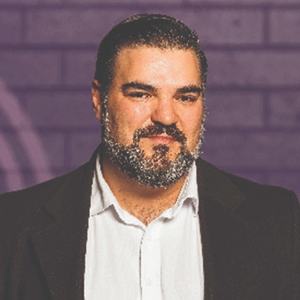THANK YOU FOR SUBSCRIBING

Are Existing and Traditional Systems and Scripts Still Critical for Universities?
Steffan Bale, Associate Director of Infrastructure, University of Wollongong


Steffan Bale, Associate Director of Infrastructure, University of Wollongong
Working at a university, you get to work with some of the smartest and brightest minds around. Minds that don’t see limits on what is possible while they strive to make the impossible real. They want to know how technology can support them, make things faster and simpler as they rise up on their fantastical endeavours, and never want to be told, “the computer says no.”
The hard reality is although technology continues to push the boundaries, there are always glaring gaps between what can, can’t and sometimes shouldn’t be done. What makes this more challenging for the technologists in the Higher Ed sector is the multiple cohorts that need to be supported in their endeavours. Technologists in a university rarely get to say no, whether it’s to a high-end microscope that only works with an outdated operating system or a communication tool that just won’t play well with others. No one wants to be told why something can’t be done they want you to make it so that it can, and, in a world where IT at home is all plug and play, they are rarely prepared to accept compromise.
Universities are long-standing institutions, and like anything that is old, the current generation is always wanting to improve upon it, remodel it, or even tear it down and start over. But as with anything that has stood the test of time, it carries the weight of its antiquated IT systems and sometimes the scars of IT systems that failed to deliver on their promised potential.
Modern technology is never standalone, you don’t get to deploy to a greenfield site everything that is new needs to work with the old, and it is this garden of technology that modern IT staff are set to work.They have lived through the mistakes of trying to graft one system to another. They know what solutions are complementary and which will run wild like weeds and consume the available resources, whether it's time, resources, or money. They understand the beauty in the simplicity of seamless service provisioning, they take joy in making things work and feel satisfaction when things make sense and can be understood and are repeatable. And it is in the deep roots of the old systems and scripts that you find the data in an environment such as a university you will often find deep down the roots of the systems and scripts that keep the technical lifeblood of the institution pumping data.
This is what universities ultimately boil down to their data. This data represents what they know, what they teach and what they research. To be able to do anything worthwhile in a digital age, it is this data that is critical. It is this data that needs to be mined, it needs to be allowed to flow easily and securely to wherever it needs to go. It needs to be relatable and digestible; it needs to make sense, and it should have arrived yesterday.
With technology, anything is possible it is just a matter of complexity which equates to time and money. The best use of time is at the start to take time to understand your environment and its process, both strengths and limitations. You then need to take time to define what it is you have and what works and what doesn’t, both within the technology stack and with the teams who have only ever done things one way because that’s the only way it has worked. If you don’t spend the time here, then it will cost you more when you buy that new system and try to make it work and try to understand why it doesn’t deliver what was expected and is never used.
Weekly Brief
I agree We use cookies on this website to enhance your user experience. By clicking any link on this page you are giving your consent for us to set cookies. More info
Read Also












